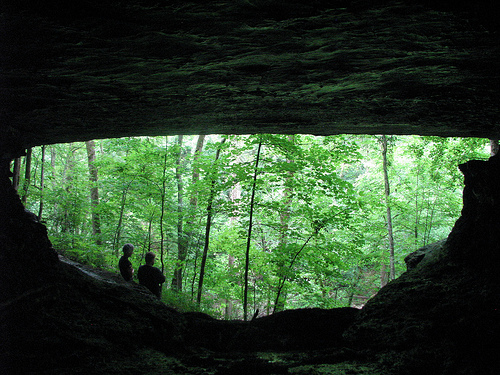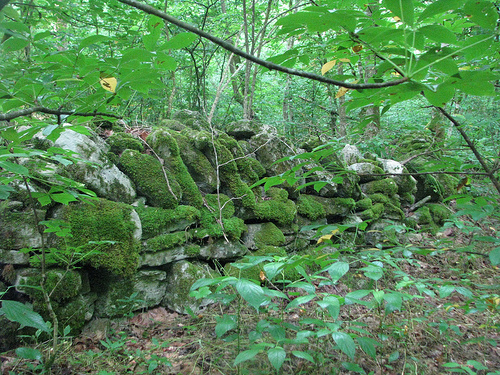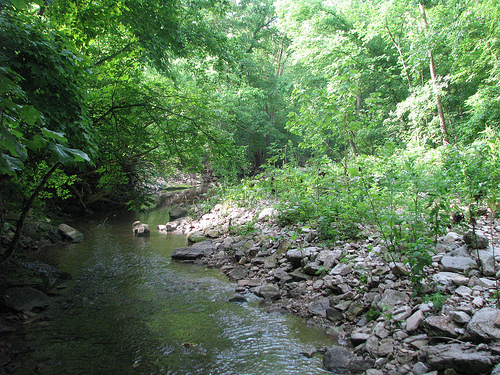 |
| Cave Over Marble Creek – Jessamine Co., Kentucky |
Saturday last, a friend, Liz Hobson and I trekked alongside the beautiful Marble Creek. Hobson helped to organize the I-75 Disconnectors organization and is the owner of a 50-acre tract nestled along Marble Creek.
The proposed 13-mile, $400 million connector between I-75 and the to-be-built eastern bypass around Nicholasville would slice through the Marble Creek watershed and would forever alter Jessamine County’s historic and natural resources.
Our beautiful hike revealed to me an impressive cave, a pristine creek nestled in an at-times deep gorge, and an environment surrounded by native species of both flora and fauna. Natural beauty was everywhere.
Price, along with his neighbors in the Marble Creek neighborhood, disagreed with Fayette County leadership. From this dispute arose the establishment of Jessamine County from Fayette in 1798. Price would then serve for many years in Frankfort as a legislator from Jessamine.
 |
| Dry laid limestone wall near Marble Creek |
An 1861 map identifies James Soper as the property owner of the land which today includes Hobson’s 50 acres.. In 1871, James’ son, John Soper began selling off 19 acre parcels to African Americans. Following these transactions and throughout the post-Civil War era, a significant African American settlement was established. Though only archaeological evidence remains, vestiges of the settlement can be easily recognized in the form of cemeteries, foundations, and dry laid limestone walls so ubiquitous to central Kentucky.
 |
| Marble Creek – Jessamine Co., Kentucky |
At one spot on our hike, our group noted a mighty oak tree standing adjacent to the intersection of two of these dry laid limestone walls. Daniel Boone, the legendary pioneer, temporarily settled near Marble Creek. For a time, Boone was hired by the Fayette County Surveyor to survey land in the region.
One can easily imagine Boone calling the property boundary here with something like “… beginning with the intersection of two stone walls near the great oak tree north for 150 rods, thence west ….” Though today we often scoff at the old system of metes and bounds and its use of trees or man made objects to create legal surveys, the utility seems timeless in the unchanged Marble Creek.
A survey conducted for the Kentucky Heritage Council revealed no fewer than three distinct historic districts eligible for inclusion on the National Register of Historic Places as having a significant historic sense of time and place contributing to the fabric of our Nation’s history.
Once lost, these natural and historic resources cannot be recreated. This is the why The Blue Grass Trust for Historic Preservation included the Historic Resources in the I-75 Connector Corridor on its 2013 list of endangered properties worthy of preservation.

This column originally appeared in the Jessamine Journal.
It should not be republished without permission.
